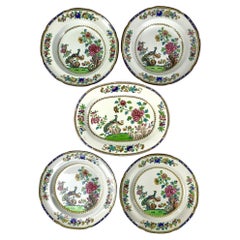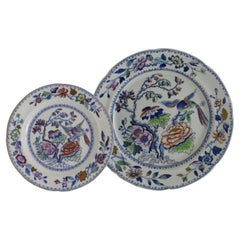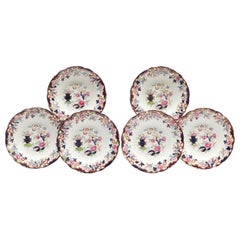English Ironstone Plates Chinoiserie
Antique Late 19th Century English Chinoiserie Dinner Plates
Ironstone
Antique 19th Century English Chinoiserie Ceramics
Ironstone
Antique 19th Century English Chinoiserie Ceramics
Ironstone
Recent Sales
Antique Late 18th Century English Chinoiserie Dinner Plates
Ceramic
Antique 1840s Chinoiserie Dinner Plates
Ironstone
Antique 19th Century English Chinoiserie Dinner Plates
Ironstone, Pottery
Antique 1890s English Chinoiserie Dinner Plates
Ceramic
Antique 1890s English Chinoiserie Dinner Plates
Ceramic
Antique 1890s English Dinner Plates
Ironstone
Antique 19th Century English Chinoiserie Ceramics
Ironstone
Antique Late 19th Century English Chinoiserie Dinner Plates
Ironstone
People Also Browsed
Antique Mid-19th Century English High Victorian Taxidermy
Other
21st Century and Contemporary American Sofas
Linen, Velvet
Antique Early 19th Century English Georgian Ceramics
Ironstone
Early 20th Century English Chinoiserie Ceramics
Ironstone
Mid-20th Century Chinese Chinese Chippendale Dinner Plates
Porcelain
Antique 19th Century French Dinner Plates
Porcelain
20th Century Danish Porcelain
Porcelain
Mid-20th Century Japanese Mid-Century Modern Dinner Plates
Porcelain
Antique Early 19th Century English Georgian Ceramics
Ironstone
Antique Early 19th Century English George III Ceramics
Ironstone
Mid-20th Century English Romantic Dinner Plates
Ceramic, Porcelain
Antique Early 19th Century English Georgian Tableware
Ironstone
Antique Late 19th Century French Dinner Plates
Porcelain
Antique 1840s English Neoclassical Dinner Plates
Earthenware
20th Century Hungarian Dinner Plates
Porcelain
Early 20th Century English Chinoiserie Ceramics
Ironstone
English Ironstone Plates Chinoiserie For Sale on 1stDibs
How Much is an English Ironstone Plates Chinoiserie?
A Close Look at Chinoiserie Furniture
Emerging in the 17th century, chinoiserie appropriated the aesthetics and imagery of popular East Asian design for European-made versions. Reflecting the exoticization of China, Japan and other countries in this era, the word directly translates from French to “Chinese-esque,” which reveals its shortcomings as a style of furniture and decor that often stereotypically and reductively mimics Asian culture rather than showcasing and paying tribute to its artistic traditions.
The enthusiastically decorative chinoiserie style was propelled by influential tastemakers including French King Louis XIV, whose Trianon de Porcelaine in 1670 was inspired by Chinese architecture. Expanded trade between the East and West led to a demand for porcelain, lacquer objects, silk and other goods, which further informed the fanciful furniture being crafted in Europe.
Artisans working in the chinoiserie style used materials and elements like pagoda shapes, bamboo, lacquer surfaces, bird and flower motifs and other interpretations of Asian design on pieces that were frequently set against vibrant wallcoverings. This whimsical approach yielded chinoiserie furniture that boasted dramatic flourishes drawing on the natural world and reflected the dominance of Rococo during the 18th century.
As chinoiserie was shaped by approximations of Asian design by European creators, it had regional variations, such as Chinese Chippendale in England where cabinets, chairs and tea tables had wooden fretwork designs and “japanned” surfaces intended to resemble lacquer work that was created in East Asia. In North America, furniture makers in Boston and New York integrated chinoiserie-painted scenes into Queen Anne furniture.
Antique chinoiserie furniture has continued to be fashionable, from its popularity with decorators of the Hollywood Regency era — James Mont, Tommi Parzinger, William Haines and Samuel Marx favored the style — to contemporary interior designers, although it brings with it a complex history.
Find a collection of chinoiserie bedroom furniture, cabinets, decorative objects and more on 1stDibs.
Finding the Right Serveware, Ceramics, Silver And Glass for You
Your dining room table is a place where stories are shared and personalities shine — why not treat yourself and your guests to the finest antique and vintage glass, silver, ceramics and serveware for your meals?
Just like the people who sit around your table, your serveware has its own stories and will help you create new memories with your friends and loved ones. From ceramic pottery to glass vases, set your table with serving pieces that add even more personality, color and texture to your dining experience.
Invite serveware from around the world to join your table settings. For special occasions, dress up your plates with a striking Imari charger from 19th-century Japan or incorporate Richard Ginori’s Italian porcelain plates into your dining experience. Celebrate the English ritual of afternoon tea with a Japanese tea set and an antique Victorian kettle. No matter how big or small your dining area is, there is room for the stories of many cultures and varied histories, and there are plenty of ways to add pizzazz to your meals.
Add different textures and colors to your table with dinner plates and pitchers of ceramic and silver or a porcelain lidded tureen, a serving dish with side handles that is often used for soups. Although porcelain and ceramic are both made in a kiln, porcelain is made with more refined clay and is more durable than ceramic because it is denser. The latter is ideal for statement pieces — your tall mid-century modern ceramic vase is a guaranteed conversation starter. And while your earthenware or stoneware is maybe better suited to everyday lunches as opposed to the fine bone china you’ve reserved for a holiday meal, handcrafted studio pottery coffee mugs can still be a rich expression of your personal style.
“My motto is ‘Have fun with it,’” says author and celebrated hostess Stephanie Booth Shafran. “It’s yin and yang, high and low, Crate & Barrel with Christofle silver. I like to mix it up — sometimes in the dining room, sometimes on the kitchen banquette, sometimes in the loggia. It transports your guests and makes them feel more comfortable and relaxed.”
Introduce elegance at supper with silver, such as a platter from celebrated Massachusetts silversmith manufacturer Reed and Barton or a regal copper-finish flatware set designed by International Silver Company, another New England company that was incorporated in Meriden, Connecticut, in 1898. By then, Meriden had already earned the nickname “Silver City” for its position as a major hub of silver manufacturing.
At the bar, try a vintage wine cooler to keep bottles cool before serving or an Art Deco decanter and whiskey set for after-dinner drinks — there are many possibilities and no wrong answers for tableware, barware and serveware. Explore an expansive collection of antique and vintage glass, ceramics, silver and serveware today on 1stDibs.



